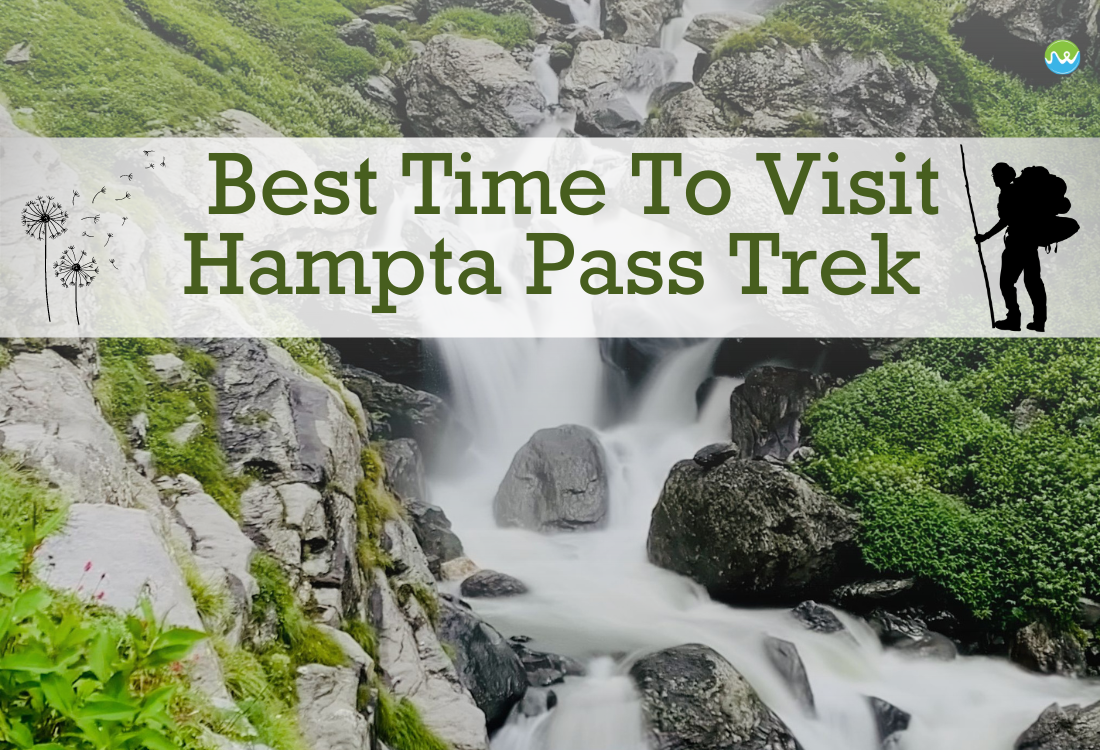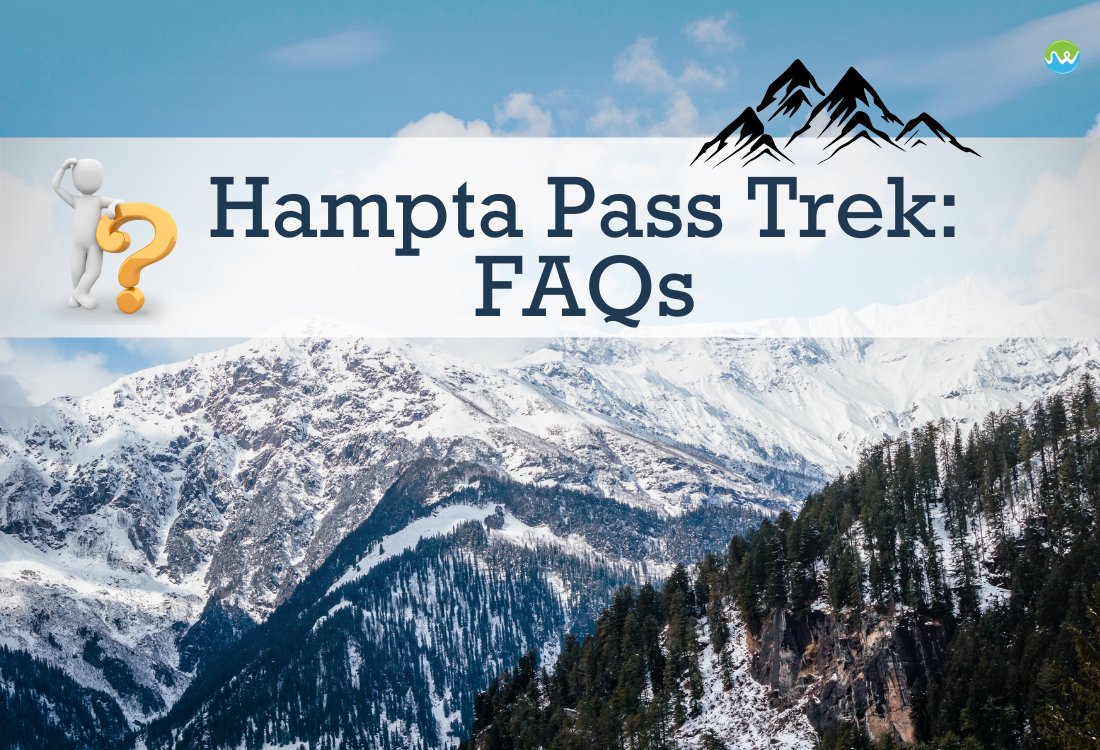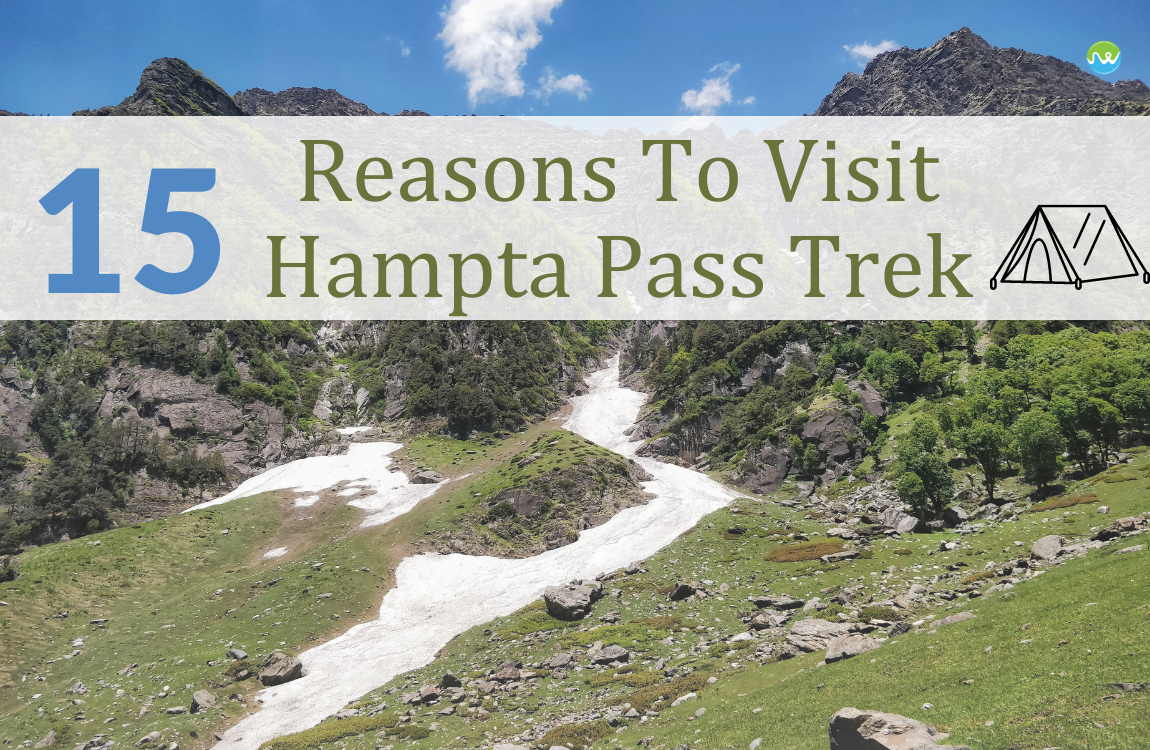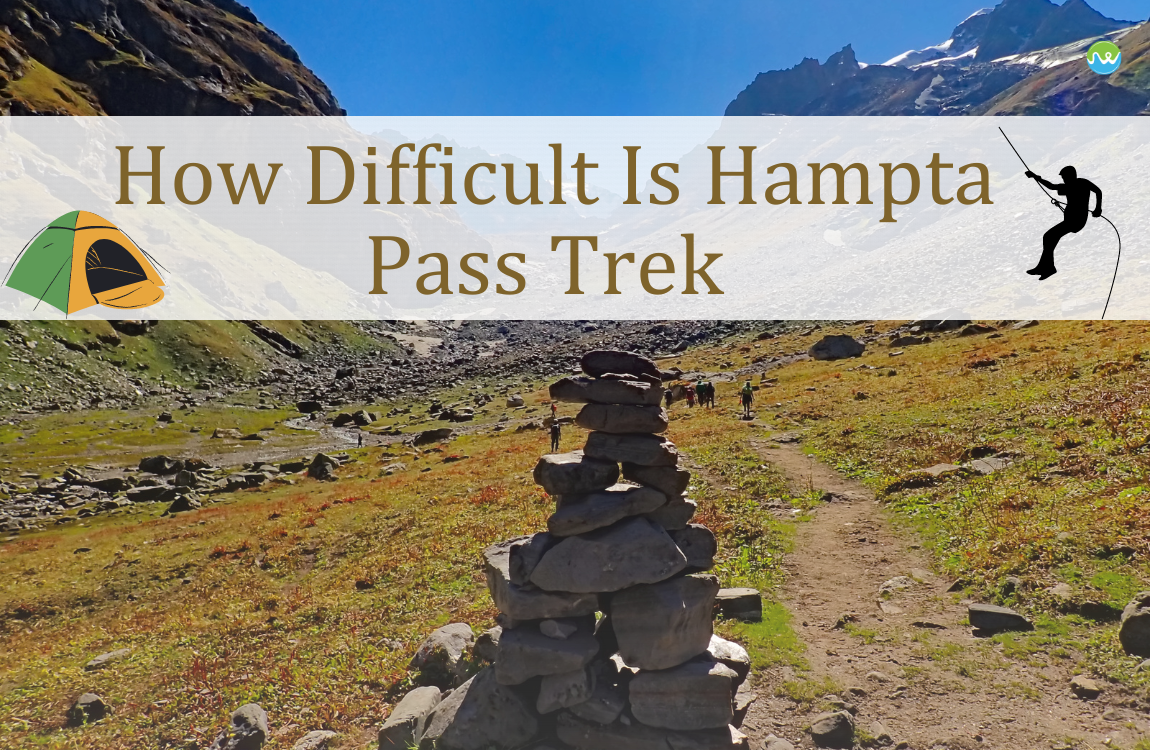The Hampta Pass is situated at an impressive altitude of 14,100 feet (4,298 meters) in the Pir Panjal Ranges of the Himalayas. This pass holds great geographical significance as it connects two vastly different terrains. The Hampta Pass trek spans a total distance of 35 kilometers and is typically completed over a period of 5 days. The trek is divided into two parts, but one common feature throughout is the presence of rivers. In the initial two days, the trail runs alongside a tributary of the Beas river through the beautiful Kullu valley. On the latter days, it follows a tributary of the Chandra river as it winds through the Pir Panjal ranges and Lahaul valley. The Hampta Pass is conveniently located just 15 kilometers away from Manali, making it easily accessible for those seeking adventure.
What makes this trek truly captivating is the astounding contrast in landscapes, as you journey from the vibrant greenery of the Kullu Valley to the desolate, desert-like terrain of the Lahaul and Spiti Valleys. Embarking from the bustling hill station of Manali, renowned for its picturesque charm, the trail meanders through the dense Jobra forests and opens up to the sprawling meadows of Chika and Balu ka Ghera. As you ascend to the high-altitude grazing ground of Shea Goru, you’ll find yourself immersed in a world of snow-covered ruggedness, a sight that will take your breath away. The pinnacle of this expedition lies in conquering the formidable Hampta Pass, a thrilling feat that awaits you 14,000 feet above sea level. What sets this trek apart is its accessibility to both novice and seasoned trekkers, thanks to its moderate difficulty level. Prepare to be enthralled by the diverse ecosystems, surreal landscapes, and the ethereal experience of walking amidst the clouds.

And let’s not forget the icing on the cake – a visit to the mesmerizing Chandratal Lake, with its crystal-clear azure waters. This transformative journey typically spans 4-5 days and is best undertaken between June and September, when the weather conditions are most favorable. In essence, the Hampta Pass Trek promises an unparalleled encounter with the serene beauty of the Himalayas, leaving you spellbound by its magnificence.
What is the best time to visit Hampta Pass Trek
Manali, a well-known town in Himachal Pradesh, serves as the starting point for various treks, and one of them is the Hampta Pass trek. Hampta Pass is situated at an elevation of 14,039 feet on the Pir Panjal range in the Himalayas. It’s a narrow passage between two valleys, the Lahaul Chandra Valley and Kullu Valley, in Himachal Pradesh.
The trail to Hampta Pass is a popular and convenient trek in Manali, Himachal Pradesh, offering breathtaking views of Lahaul, Kullu, and Spiti Valley. If you have the right equipment and trekking gear, the trek is safe and adventurous. However, it’s important to know the best time to visit Hampta Pass for a trek.

The best time to do this trek is from June to October when the snow has melted and you can enjoy the greenery, waterfalls, and rivers. In June, you can still see some snow, and in July and August, you can catch sight of beautiful pink flowers, marigolds, and blue poppies. These are well-known flowers, but you will also see wildflowers along the trail. Towards the end of August and early September, there may be some rain in the mountains. In September, you can see the autumn colors and snow-covered hills against the clear blue sky. By October, the weather gets chilly and the temperature drops below zero.
Here are the details to help you choose the most favorable month for your trip!
Hampta Pass Trek in June
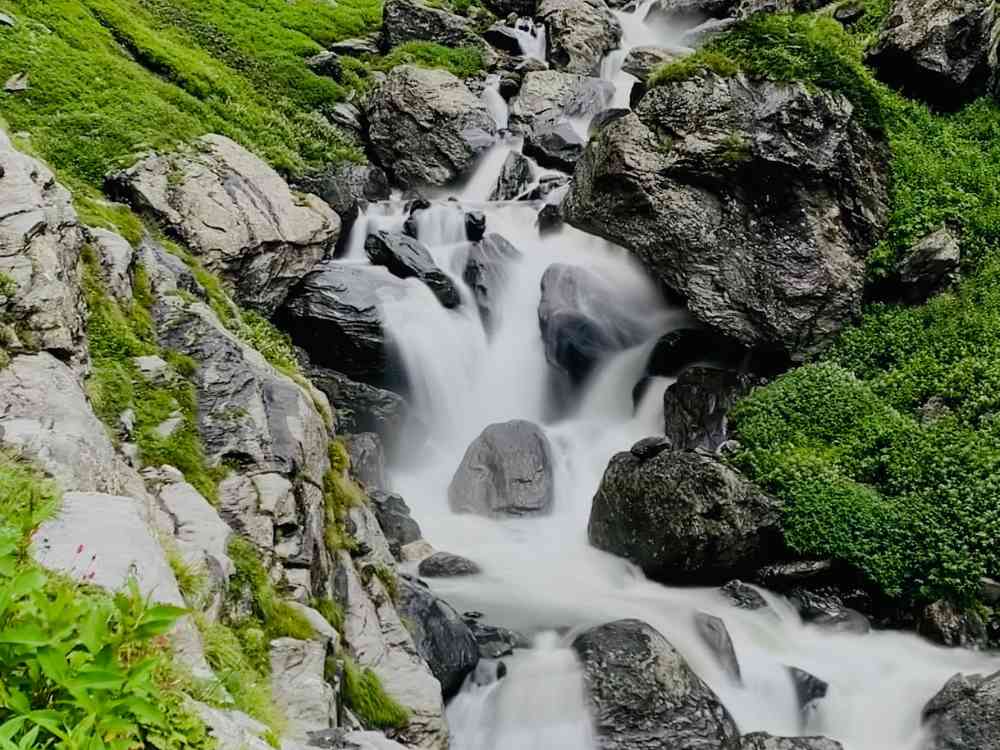
During June, there is still a significant amount of snow around. The snow melts slowly, and until mid-July, the place remains covered in snow. So, if you want to experience a snow trek in Hampta Pass, this is the ideal time. However, be prepared for a more challenging trek due to heavy snowfall after crossing the Balu ka Ghera campsite on the third day. If the road conditions are good, you might get the opportunity to see the beautiful Chandratal lake at an altitude of 14,000 feet. This snow trek is filled with adventure, including a visit to Chandratal lake, climbing a pass at 14,000 feet, glaciers, and being surrounded by mountains. At night, you can even stargaze and, if you’re lucky, catch a glimpse of the Milky Way. So, if you’re looking for an unforgettable trekking experience, consider visiting Hampta Pass during June.
In June, expect a lot of snow beyond Balu Ka Ghera. The area past Balu Ka Ghera camp and up to the pass will have a good amount of snow, and the Lahaul side will also be covered in snow. The snow depth on both sides is significant. There may be patches of snow on the flat areas leading to the grassy Shea Goru camp. The valley’s shape and limited sunlight contribute to the abundance of snow in late June.
In June, be prepared for heavy snowfall starting from Balu Ka Ghera and continuing throughout the journey to the pass. The snow will persist until you reach the Lahaul side, with both sides having a considerable amount of snow. There may also be scattered patches of snow on the flat areas leading to the grassy Shea Goru camp.
Hampta Pass Trek in July
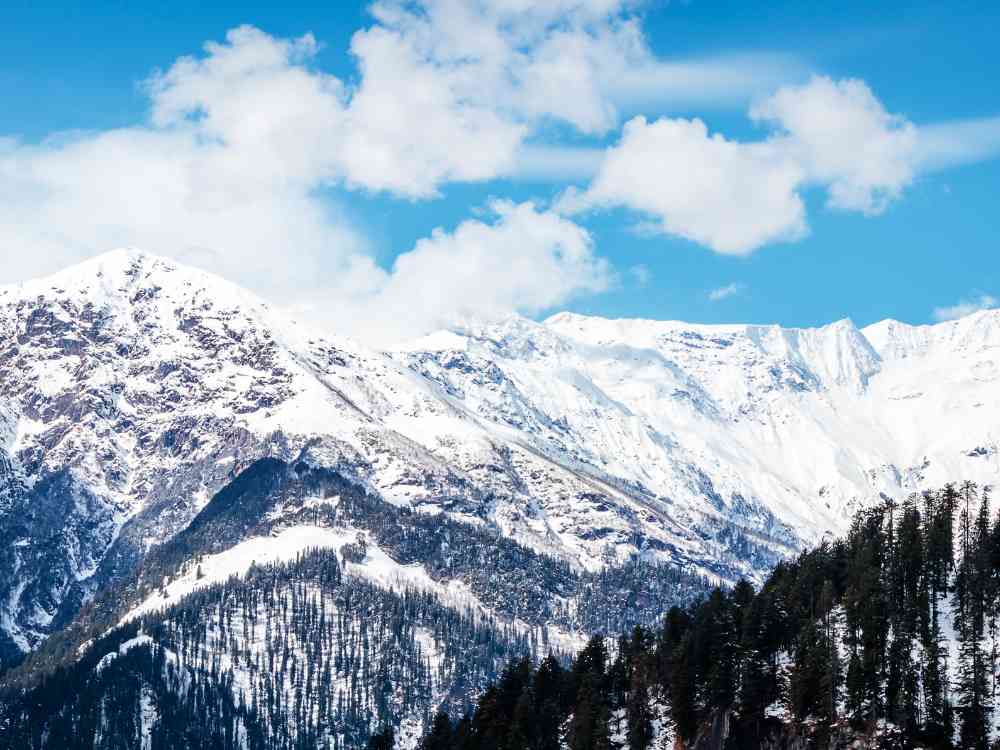
The snow starts melting in mid-July, and the monsoon season begins with heavy rains in Manali. If you enjoy trekking in rainy weather, this is the perfect month for you. The region becomes vibrant with greenery, wildflowers, and fresh water bodies. The forests appear foggy and dense, creating a unique and beautiful experience. The Hampta pass trek is relatively easy during this time, with no snow and picturesque meadows and rocky trails. You’ll have a great time crossing rivers and waterfalls along the way. You can also return from Rohtang Pass, which is only open for a few months like July, August, and September. If you want to experience the monsoons in Hampta, July is the best time as you’ll witness rainfall that will create unforgettable memories. Don’t forget to visit the enchanting Chandratal Lake for camping and immerse yourself in the Himalayan winds.
During the months of July and August, the valley becomes a vibrant and lively place as the flowers bloom. You can see a variety of colorful wildflowers like marigolds and blue poppies. The monsoon season starts in July, bringing the first showers that make the wildflowers grow abundantly in the lush green area on the Kullu side. If you go trekking during this time, you will be treated to a beautiful sight of walking through a carpet of wildflowers on both sides of the trail. The best time to do the Hampta Pass trek is from mid-July to the end of August when the grasslands are a vibrant green and the slopes are covered in swaying wildflowers. Although it may be cloudy and rainy during this period, the occasional showers only enhance the beauty of the trek.
Hampta Pass in August

By August, the snow has completely melted, and the valley becomes sunny with occasional rainfalls, mostly ending after the first week. During this time, the region transforms with lush green meadows adorned with blooming flowers. The sun shines brightly, birds chirp in the high woodlands, and rivers and waterfalls flow vigorously. The meadows showcase a variety of colorful flowers, ranging from yellow, orange, pink, to red. As you venture beyond the tree line, you’ll witness the raw and barren rocky landscape.
The sides of the Himachal and Spiti region are covered in green meadows, surrounded by majestic mountain ranges. The snow-capped peaks add a touch of elegance to the cool and sunny weather. Don’t miss the opportunity to visit Chandratal Lake, known for its exceptional camping sites and being the highlight of the trek.
However, it’s important to note that August is still part of the monsoon season, and the Manali region experiences heavy rainfall. The roads can be patchy, slippery, and muddy, especially near waterfalls and rivers. Therefore, it is crucial to be extremely cautious and plan your trek meticulously during this period.
Hampta Pass in September
The rainy season continues until mid-September, providing a refreshing end to the trekking experience. By the end of September, the sky clears up and the mountains are adorned with the stunning colors of autumn. The Hampta Pass is at its most beautiful during this time, as if nature is wearing its finest clothes. The sunrise and sunset are breathtaking, with the golden light of the sun illuminating the snow-capped peaks against the deep blue sky. The trek, at this time, is absolutely perfect.
Hampta Pass in October

The Hampta Pass trek in the first week of October offers a unique experience. As winter approaches, the weather becomes calm and chilly, with no rain. This creates ideal conditions for photography, as the sky is clear and the mountain peaks and valleys are visible. During the day, it will be bright and sunny, but the nights will be cold as the temperature drops. However, it is important to note that trekking the Hampta Pass in October is uncertain. By the second week, heavy snowfall may make it difficult to cross the pass. If you choose to trek during this time, you may need to take an alternative route while descending, as the Rohtang pass may be closed due to snow.
From mid-October onwards, the weather changes and snowfall becomes heavier. The climate becomes unpredictable, and trekking becomes more challenging due to narrower roads caused by snow. The Rohtang Pass remains closed until May, making the path even more difficult. It is also worth mentioning that the Hampta Pass is only open for a few months each year, from May-June to mid-October. During the other months, the region experiences sub-zero temperatures and is inaccessible by foot. Therefore, it is not recommended to go for a trek during these months, as the harsh weather and snowy trails make it tough and strenuous.
FAQs
What is the best time to do the Hampta Pass Trek?
The best time to do the Hampta Pass Trek is from June to September. This period offers a pleasant weather, ideal for trekking, with temperatures ranging from 5 to 15 degrees Celsius
Can I do the Hampta Pass Trek in May?
While it is technically possible to do the Hampta Pass Trek in May, it is not recommended due to the presence of a lot of snow on the trail, which can make the trek challenging. The temperatures are also quite cold, ranging from -4 to 0 degrees Celsius at night and 8 to 10 degrees Celsius during the day.
What is the ideal time for snow on the Hampta Pass Trek?
If you want to see snow on the Hampta Pass Trek, the ideal time is in May or September. These months offer a good chance of encountering snow on the trail, although the conditions can be challenging.
What is the best time for greenery on the Hampta Pass Trek?
If you prefer to see lush greenery on the Hampta Pass Trek, the best time is in July and August. During these months, the rain brings out the flowers and lush greenery on the trek, making it a beautiful sight.
Is the Hampta Pass Trek suitable for beginners?
Yes, the Hampta Pass Trek is considered a moderate trek and is suitable for beginners who have a good level of fitness. The trek involves a few steep ascents and descents, but with proper preparation and guidance from an experienced trekking team, it is achievable for most people.
What are the essential items to pack for the Hampta Pass Trek?
To ensure a safe and comfortable trek, it is essential to pack the right gear. This includes a durable and comfortable backpack, a good-quality sleeping bag, personal medications, water bottles, snacks, trekking poles, sun protection, basic toiletries, identification documents, and a camera
Can I do the Hampta Pass Trek in the winter?
No, it is not possible to do the Hampta Pass Trek in the winter because the entire area is covered in deep snow, and the roads and trekking routes are blocked.
Don’t wait for next season, visit Hampta Pass now!!

